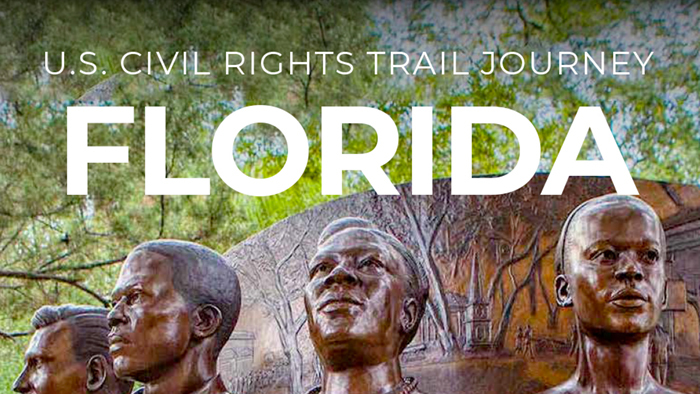The Fight for Justice and Equality
Mims, Florida, a mainly rural community, may seem an unlikely place for civil rights activity. But here in the 1930s and 1940s, schoolteachers Harry T. Moore and his wife Harriette Simms Moore opened the first state chapter of the NAACP, fought for equal pay for teachers, started the Progressive Voters League, and investigated lynchings and police brutality. The Moores’ efforts for justice and equality cost them their lives when their home was bombed on Christmas Day in 1951.
As president of the Brevard County chapter of the NAACP in the mid-1930s, Harry Moore engaged in civil rights activities, striving to galvanize community support for local NAACP chapters at a time when many African-Americans were fearful of the Ku Klux Klan. His involvement with the NAACP began in 1934 and ended in November 1951, a month before his murder.
While working with the NAACP, Moore held a variety of offices – from president of the Brevard County branch to president of the Florida State Conference, which he helped found. Under Moore’s leadership, the Florida-based NAACP grew from nine to 76 active branches at its peak in 1948. For his activism, Moore, his family and friends faced constant threats from the KKK, and he and his wife were both fired from their teaching positions. On December 25, 1951, the Moores’ home in Mims was bombed, mortally wounding the two.
Their deaths propelled Harry Moore’s name and work into the media spotlight. In anticipation of the publicity that his martyrdom would engender, the NAACP’s national office launched fundraising and membership drives in Moore’s name. His death had achieved the opposite of his murderer’s intentions. Rather than silencing the activism, the murders instead moved African-American citizens to fight, this time more than ever, for equality.

























